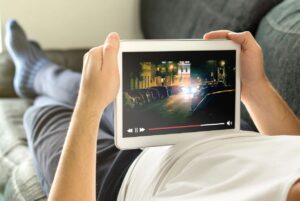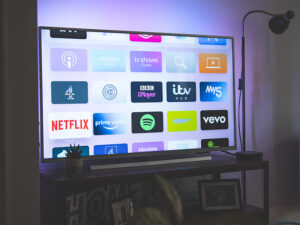Here we are, midway through 2021. When this year began, hope and renewal filled the air; many avenues seemed to be re-opening and we were looking for the 2020 lockdown death-toll horrors in the rear-view mirror. We had a vaccine!
I completed a Strategic Foresight exercise (the act of assessing the impact of trends on an organization) for Adriane Beaudry, Volunteer Manager at Joseph Brandt Hospital in Burlington, Ontario, which I presented in my April 13, 2020 column. Because life as we knew it was tossed up in the air, we set three possible horizon lines for looking at the Future of Volunteer Engagement. We assessed the potential impact of trends (observable and repeated behaviours) on the hospital in 2021, 2023 and 2025 – three points in the future. We thought that the precedent-setting speed with which vaccines became available would through our predictions off. Yet, in a twist of fate, the vaccine rollout, circus-like though it was, confirmed our predictions.
Adriane and I have been on the virtual road since then, presenting our research and Futures work to stakeholders of volunteer-run organizations, helping them make sense of the pandemic’s impacts on their volunteers, staff members, clients and overall operations. During these presentations and workshops, I have noticed two trends when talking about the future:
- Most people wants “the” answer fast. It’s counterintuitive yet typical that, in urgent and unprecedented circumstances, organizational leaders resist taking time to study and think complex problems through in order to craft adaptive and fluid solutions.
- Strategic Foresight, or Futures work, is easily dismissed as an intellectual exercise with little pragmatic value. Although it has been shown to awaken hope and unblock imaginative planning, thinking strategically about the future can, instead, generate anxiety. As such, subsequent workshops must create safe and inspirational spaces and provide accessible tools for participants to transform insights into practice.
The work Adriane and I did together uncovered trends and scenarios similar to those identified in the Strategic Foresight work I led at Numeris, especially for its 2027 horizon. Trends that impacted media in 2017 (the digital divide, the rise of VR, the move to digital and more) still hold true today. In hindsight, I wish I had included a Global Pandemic among the black swans for media, along with Climate Change, Political Landscape and Changing Economy. Black swans are plausible events that might derail scenarios. The pandemic didn’t derail them, though. Instead, it accelerated them.
 Back in 2017, in order to determine what the future would look like for the Canadian broadcasting industry in 2027, I used a technique called the Clone of Plausibility. Looking at the driving forces of current trends, I created a baseline scenario of what 2027 would look like. Then I created two subset scenarios: one which would be beneficial to current Canadian broadcasters and their stakeholders and a second that would be detrimental.
Back in 2017, in order to determine what the future would look like for the Canadian broadcasting industry in 2027, I used a technique called the Clone of Plausibility. Looking at the driving forces of current trends, I created a baseline scenario of what 2027 would look like. Then I created two subset scenarios: one which would be beneficial to current Canadian broadcasters and their stakeholders and a second that would be detrimental.
My baseline scenario spoke of the further fragmentation of audiences due to emerging digital platforms, a lower bar to entry, new business models and lucrative monetization opportunities. Some models and behaviour, like online subscription models, were emergent in 2017. Media pundits believed that consumers would not pay for multiple subscription services. This has proven to be false, and just like with cable channels before streaming, some are being bundled.
Let me share some current observed behaviours (trends) which support the scenario I crafted at Numeris in 2017; they will come as no surprise to you. My 17-year-old godchild and her 15-year-old sister live on YouTube and other streaming platforms. They communicate on Discord. My niece loves Twitch – she follows the unfolding drama of superstar player Dream on Minecraft.
 In case you think this is only a Gen Z phenomena, look at me, at 53 years old, and my friends of all ages and alphabetical-generational groupings. We love Twitch for DJ sets and have gotten our concert fixes through livestreams (my roster includes Dua Lipa, Gorillaz, Kylie Minogue and Twenty One Pilots…along with a Tomorrowland’s virtual rave on New Year’s Eve). We have podcast lists, playlists and viewing lists. Furthermore, I’ve been spending more and more time on my Oculus Rift, which makes Ernest Cline’s Ready Player One prophecy.
In case you think this is only a Gen Z phenomena, look at me, at 53 years old, and my friends of all ages and alphabetical-generational groupings. We love Twitch for DJ sets and have gotten our concert fixes through livestreams (my roster includes Dua Lipa, Gorillaz, Kylie Minogue and Twenty One Pilots…along with a Tomorrowland’s virtual rave on New Year’s Eve). We have podcast lists, playlists and viewing lists. Furthermore, I’ve been spending more and more time on my Oculus Rift, which makes Ernest Cline’s Ready Player One prophecy.
What does this mean for media? The value of content and media channels is still determined by the size and composition of audiences. The broadcast industry requires new ways to measure audiences and advertising agencies require new ways to assess channel efficacy and worth. Existing services in Canada and abroad are struggling to measure fractured audiences. Some are trying to measure everything (radio, tv, digital, etc.), but that seems futile, reminiscent of physicists debating the Theory of Everything, yet to what end?
What’s even more disconcerting is that some services are reverting to passé measurement methods that provide a weak overview to broadcasters and their stakeholders, and pretty much nothing to advertisers and agencies. They, in turn, are asked to spend their broadcast dollars on faith.
Who are broadcasters measuring for today? Sure, they deliver spots, but who knows how many people hear it, see it or act on it? I teach Web Analytics at OCAD U and let me tell you, Google currently provides this information to your advertisers.
Although some organizations would have you believe otherwise, audience measurement is only one activity in a broadcaster’s business model, and usually an outlier at that. Because measurement is poorly understood and utilized – ask young media buyers what a GRP is and how it’s calculated – organizations often rely on other activities to measure success and to evaluate the monetary value of their product. And though there are some new, more timely and accurate audience-measurement methods, they are not widely adopted. To complicate the argument further, focusing on audience measurement alone is myopic and risky. Audience measurement speaks to the past. In order to thrive, broadcasters must also look into the future.
When I began this column in 2019, I focused on the diffusion of innovation, or how ideas (like new methods of audience measurement or new content distribution channels) are propagated and adopted within social systems. In Feb. 2020, “Transition” by William Bridges was my focus: a time when we depart from one way of doing things (death) and begin another (birth or new beginning). What happens between those two points, Bridges calls the Neutral Zone – a time of heightened creativity and innovation. Transitions demand a different kind of leader than steady periods. In my Feb. 2, 2021 column, I wrote about Heifetz’s theories on adaptive leadership and work avoidance. I have been avoiding writing a new column for several months now, while even the rotation of the earth feels off kilter. I’ve been suffering from what New York Times contributing writer Adam Grant calls languishing – feeling joyless and aimless. At last, I put metaphorical pen to paper to decree that now the time for action.
 The media industry is in survival mode. Some issues were surely brought on by the pandemic, most were bubbling up already, such as multi-platform competition that erodes broadcast audiences. The world of increased channels, fragmented audiences and content as commodity is here to stay. This is no longer a future scenario; the future is now and the scenario is reality. Savvy innovators embrace these challenges as opportunities.
The media industry is in survival mode. Some issues were surely brought on by the pandemic, most were bubbling up already, such as multi-platform competition that erodes broadcast audiences. The world of increased channels, fragmented audiences and content as commodity is here to stay. This is no longer a future scenario; the future is now and the scenario is reality. Savvy innovators embrace these challenges as opportunities.
Like Strategic Foresight, media innovation involves conjecture, action and reflection based on empirical evidence. That’s been the theme of this column for two years. Yet this column is merely an intellectual exercise if no readers take action to innovate within their own organizations. In these columns, I’ve proposed a multitude of ways that your organizations could approach innovation.
Some future-savvy broadcasters embrace change to find new ways to serve their audiences. The CBC and Radio-Canada continually amaze me, as do Crave and Indie88 (CIND-FM). Broadcasters stuck in the past, point fingers and assign blame. They stagnate and languish, while their audiences and worth get eaten up by digital platforms. They rely on hope – never a good strategy – and complain that the lack of resources holds them back. Sorry, but I see plenty of resource-poor community, college and regional radio stations innovating with the creative and effective use of internal resources and local talent.
I know many of you are in survival mode, but if you don’t participate in forging the future it will be forged for you, and not usually to your benefit. If this pandemic has taught me anything, it is that doing things like they were done before will not help you survive and thrive … except maybe for making sourdough bread.
So tell me, what are you and your organization doing to innovate, survive and thrive? Reach me directly at eblais@statsradio.com.



